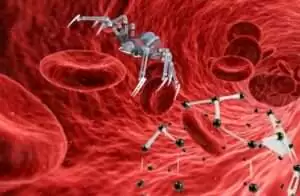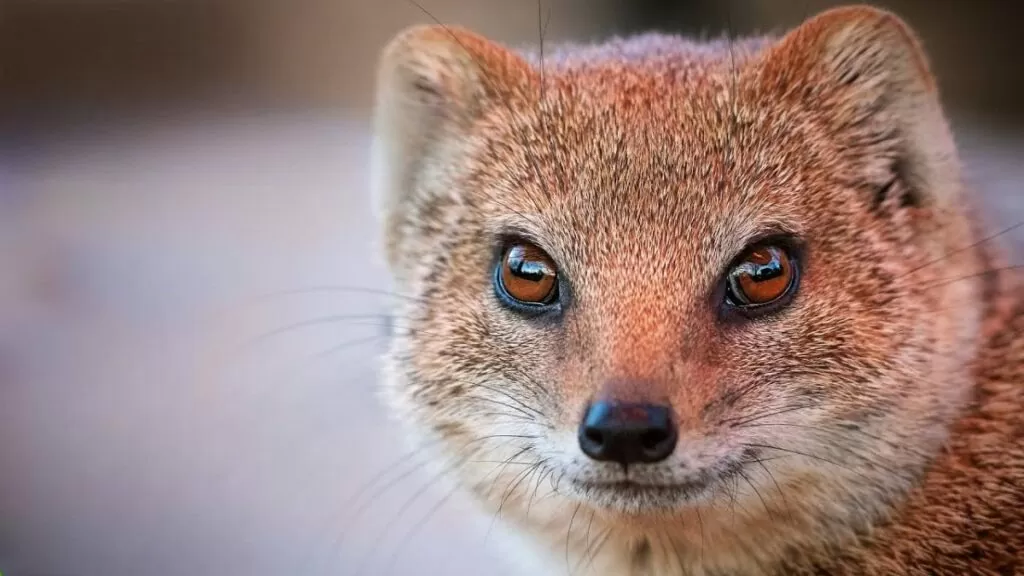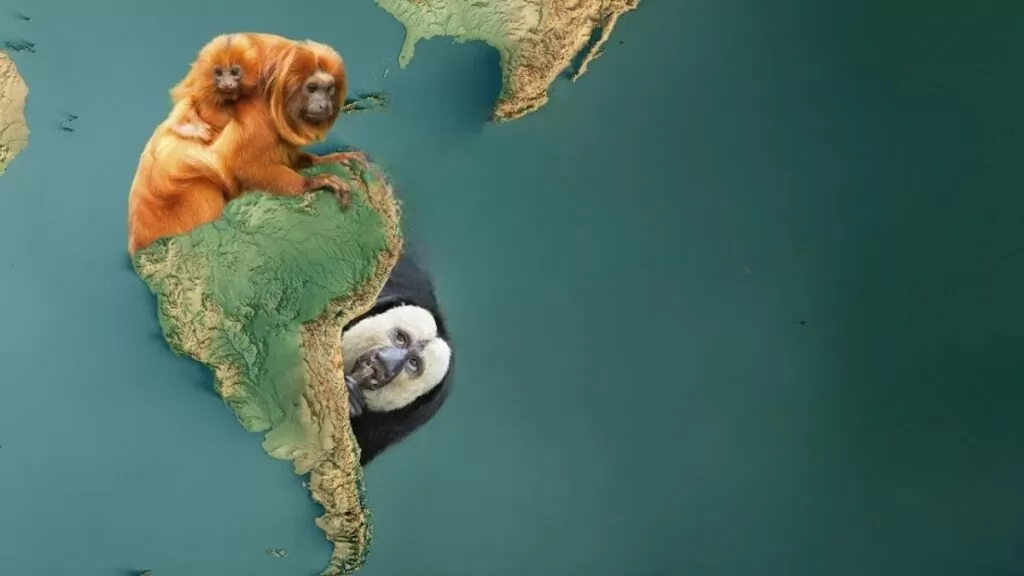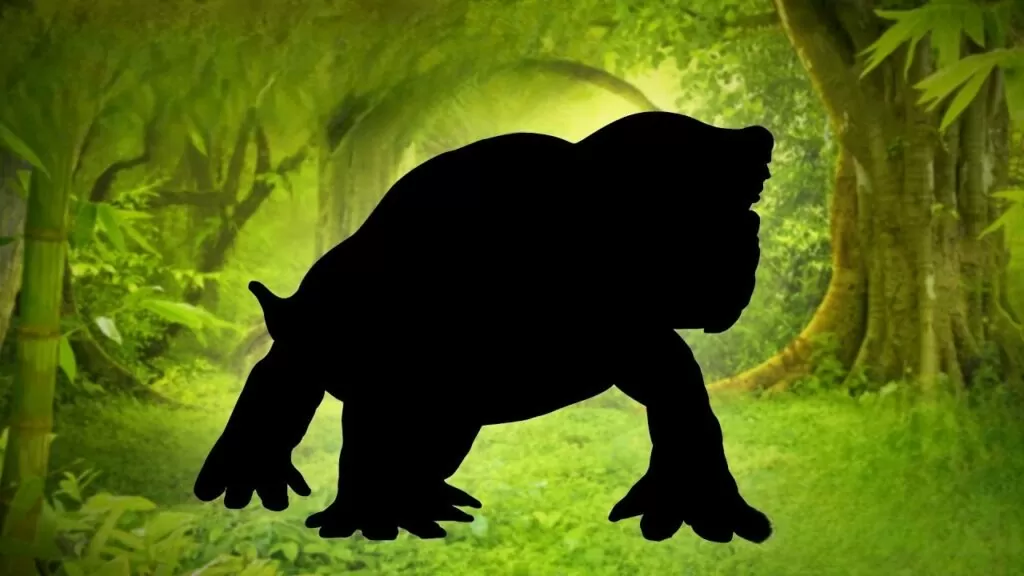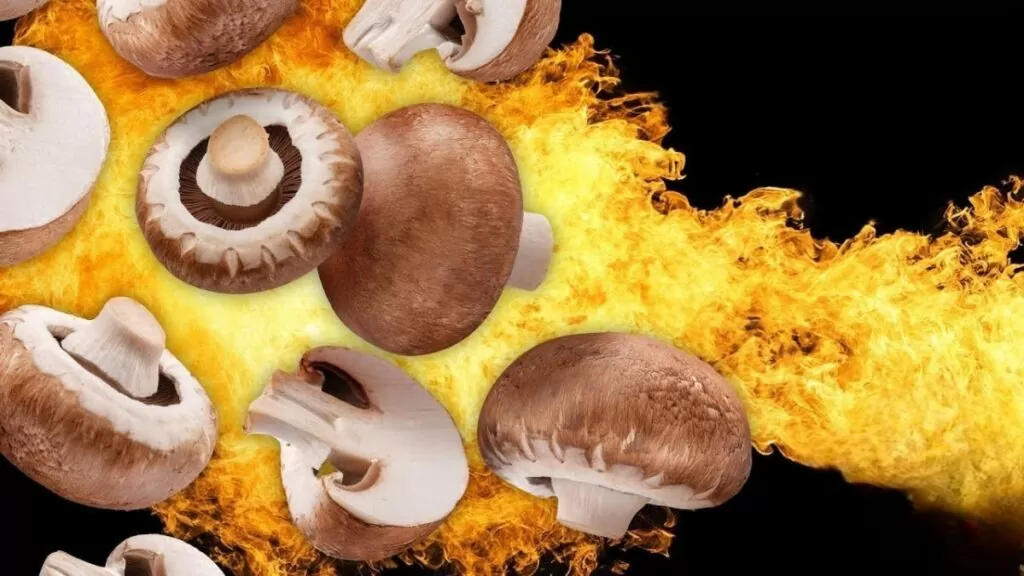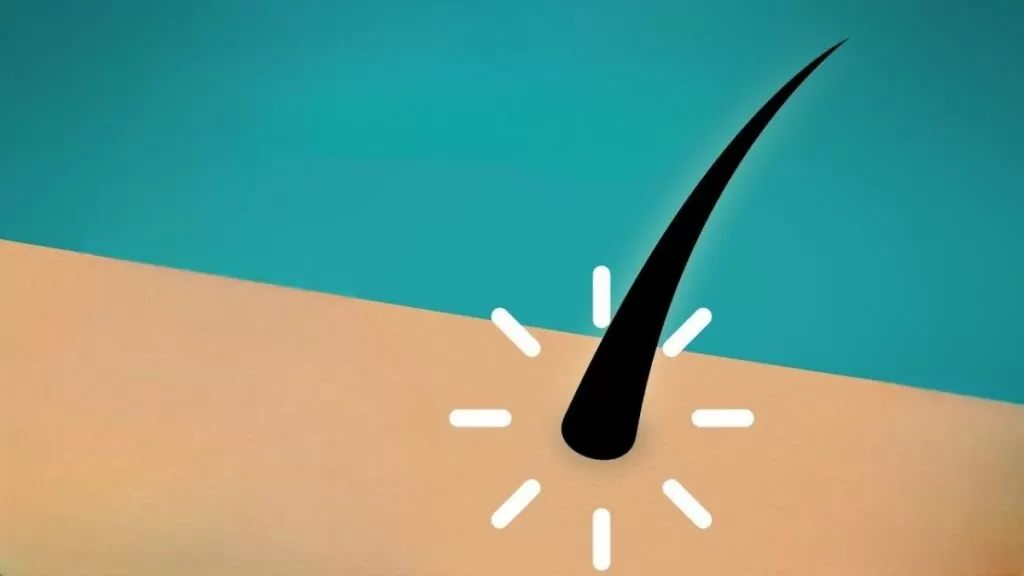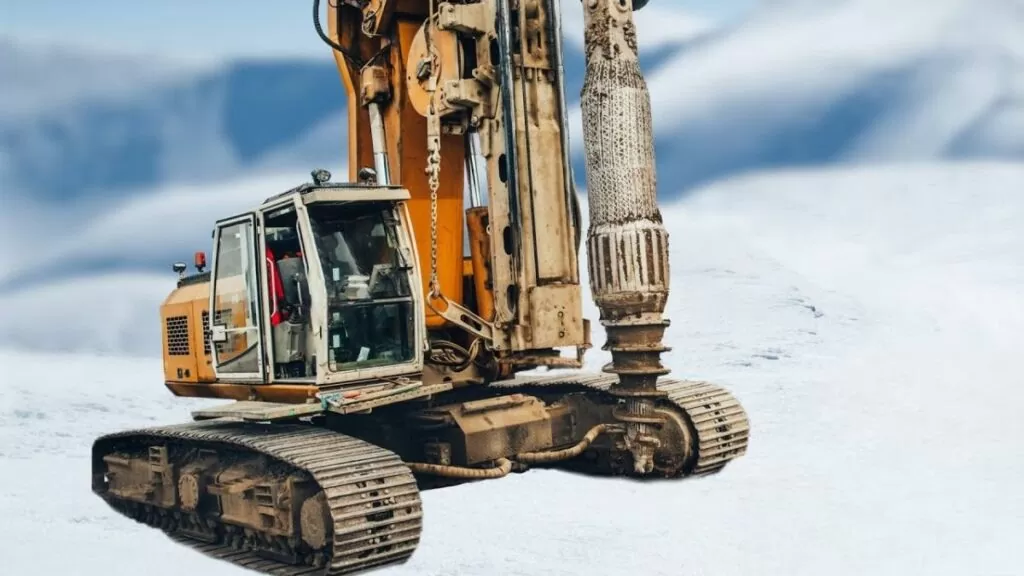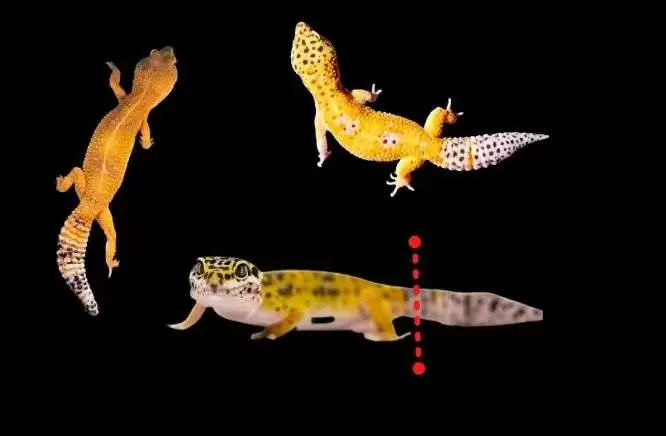
When we lose a limb or damage the spinal cord then we cannot regrow new ones. We humans are the superior species but also our regrowth power is not good enough.
Leopard Gecko, a reptilian animal can regrow its tail and recover the damage of the spinal cord.
Interesting Facts about Leopard Gecko Tail
- Leopard Gecko Tail Waving: They wave out their tail when they are in attack mode at prey or defense mode at the predator.
- Leopard Gecko Tail Rattling: They often rattle the tip of its tail when they are excited. It is the sign of excitement of a kind of mating ritual.
- Fat Store: They possess fat tails to store fat for conditions where there is not a food supply. They can live upto a month or more without food by burning the fat in its tail.
- Tail Detach or Self Amputation: They self amputate their tail whenever they feel threatened from predators. When they detach the tail, they lose the source of emergency nutrition.
- Leopard Gecko Tail Regrowth: They can regrow their tail within a month. However, the new tail is never the same as the original, so it looks stubby, stumpy, or bulbous. Again the Gecko can restore the fat in their new tail.They can regrow a new tail within 30 days.
In the wild, Gecko detach their tail to distract the predator for long enough to escape and save its life.
The detached tail still moves due to nerve endings and the predator have easy meal which helps the Gecko to escape.
FAQs
How long does a leopard gecko tail take to grow back?
Geckos regrow their tail back immediately within 30 days.
How do I get my leopard gecko to regrow its tail?
To help a leopard gecko regrow its tail, provide it with a healthy diet, a safe and stress-free environment, and avoid handling it excessively. Some leopard geckos are able to regenerate their tails if they lose it as a defense mechanism, but the regrowth may not be identical to the original tail.
Do leopard geckos’ tails grow back the same?
Yes, they have the ability to grow back a completely new tail
What does a regrown leopard gecko tail look like?
Geckos often lose their tails, but they could regenerate them and regrow them differently and in a shorter time than the original, resulting in a similar but differently colored regrowth, which would often look and look differently as the days passed.
Do leopard geckos’ tails fall off easily?
Geckos likely lose their tails as a natural defense mechanism when they feel threatened, but it’s not something that would happen easily. Illnesses, infections, or fear causes adult geckos to unintentionally drop their tails. However, the tail would easily break and collapse when it falls and it would grow back, although it might be easier for the tail to peel away if there are springtails around the fallen tail. So, it is probably not an easy process for the gecko to lose its tail.
What to do if a leopard gecko tails falls off?
If your leopard gecko loses its tail, take it to a veterinarian to assess if regrowth is possible. If not, provide proper care to support the lizard’s healing. Note that tail loss is a normal defense mechanism in geckos, but if there are signs of breakage, seek veterinary attention immediately.
Do lizards feel pain when they lose their tails?
Lizards, including geckos and leopard lizards, can drop their tails as a self-defense mechanism in order to distract predators and get away. Losing a tail can be harmful as it causes heavy bleeding, as the tail has many blood vessels and nerves. However, it is not a painful experience for the lizard, as the process of tail detachment severs the nerves in a way that is painless. Quick reattachment can restore the fallen tail in some cases, despite its inability to regrow. Whether or not the tail falls off, it takes time for the lizard to regrow its tail, but it is a cost that lizards are willing to pay in order to protect themselves.
Will leopard geckos eat their own tail?
Leopard geckos may store fat in their tails, which they may consume when they need to replenish their energy. However, it is usually surprising to find a leopard gecko eating its own tail, as they usually find food drops to bite and eat. There could be several reasons why a leopard gecko may bite its own tail, such as removing a torn or shedding skin, but it’s not a common occurrence. Overall, it’s not a typical behavior for leopard geckos to eat their own tails, but it’s possible for them to do so if they need to replenish their fat stores.
What is the lifespan of leopard geckos?
The average lifespan of a leopard gecko in captivity is around 10-20 years, with some living for almost thirty. In the wild, the lifespan is shorter, with a life expectancy of around 8-10 years. Males tend to have a slightly longer lifespan compared to females. Longevity can be influenced by factors such as eating habits, tail loss, and overall health. As a pet, it is important to provide a balanced diet, which includes the proper type of food and eating schedule. By taking good care of your leopard gecko, you can help increase its lifespan and span.
How many times can a leopard gecko lose its tail?
A leopard gecko can lose its tail multiple times in its life, as it’s a common defense mechanism. The frequency of tail loss depends on various factors such as age, health and stress, but an adult leopard gecko could lose its tail several times a year and regrow a new one.
How do geckos’ tails fall off?
Gecko’s tails fall off as a natural defense mechanism, known as autotomy, which helps them escape from predators. The tail is designed to break off at a specific fracture plane, allowing the muscles to pull away from one another and cause the tail to drop, thereby distracting the predator and giving the gecko time to escape. This is a life-saving mechanism that prepares the gecko’s body to shed its tail in case of a threat, and it is also known to help the reptile in reducing stress.
Can a gecko control its tail after losing it?
A gecko cannot control its tail after losing it as the process of dropping the tail is preprogrammed and not under the gecko’s control. The tail movements following the loss are random and serve to distract predators and increase the chances of escape. The tail drop is an instant defense mechanism that happens when the gecko feels threatened or captured. The amount of food the gecko has consumed can also affect the tail drop. However, little is known about the exact process and whether the gecko can manage to control its tail after losing it.
Can you touch a leopard gecko’s tail?
You should never touch a leopard gecko’s tail as it is a sensitive part of their body and excessive handling can cause stress and minimize their enjoyment of being a pet. To minimize handling, grab geckos from the middle of their body instead of the tail when necessary. Petting their backs is okay, but avoid touching their tails as it may slow down or damage the tail regrowth.
Can I leave my leopard gecko for 2 weeks?
Yes, you can leave your leopard gecko for 2 weeks, but it is best to keep them with some attention. Geckos can last easily without attention for a week, but it is not ideal to leave them for such a long time. It is possible for a leopard gecko to be left alone for 2 weeks, but it is not recommended.
Can a gecko regrow its tail more than once?
Geckos are able to regrow their tails multiple times throughout their lifespan, as they have the ability to activate stem cells to regenerate an almost identical tail. It takes a set amount of time and the regenerated tail may not grow back as long as the original one. The number of times a gecko can regrow its tail is not certain, but it is known to be more than once.
How often can you bathe a leopard gecko?
Leopard geckos should rarely be bathed, as they do not need frequent bathing to stay clean. Bathing a leopard gecko once or twice a month is enough, and no more than two to three times a week. If the gecko has stuck shed, you can give them a warm bath over the course of several days to help them shed. Bathing a leopard gecko more than two times a month can cause stress, so it’s important to be mindful of how often you are washing your pet.
What age do you stop feeding leopard geckos everyday?
Leopard geckos should be fed every day until they are between 4 to 12 months old, after which they can be fed every 3 days. At around 10-12 months, they should only be fed once a week at least and overfeeding should be prevented to avoid health issues.
How many times a week should I feel my leopard gecko?
Adults should be fed 2 to 3 times a week, every other day, while hatchlings and juveniles should be fed every day. You should feed leopard geckos every two or three days for optimal health, although their feeding frequency may vary.
What does it mean when a leopard gecko licks you?
When a leopard gecko licks you, it means that it is exploring its surroundings using its highly sensitive olfactory level, trying to get to know and become acquainted with you. Licking is a way for the gecko to smell and taste the environment using its Jacobson’s organ inside its mouth, and it could signify the gecko’s curiosity, overall health, and comfort with its owner.
Explore:
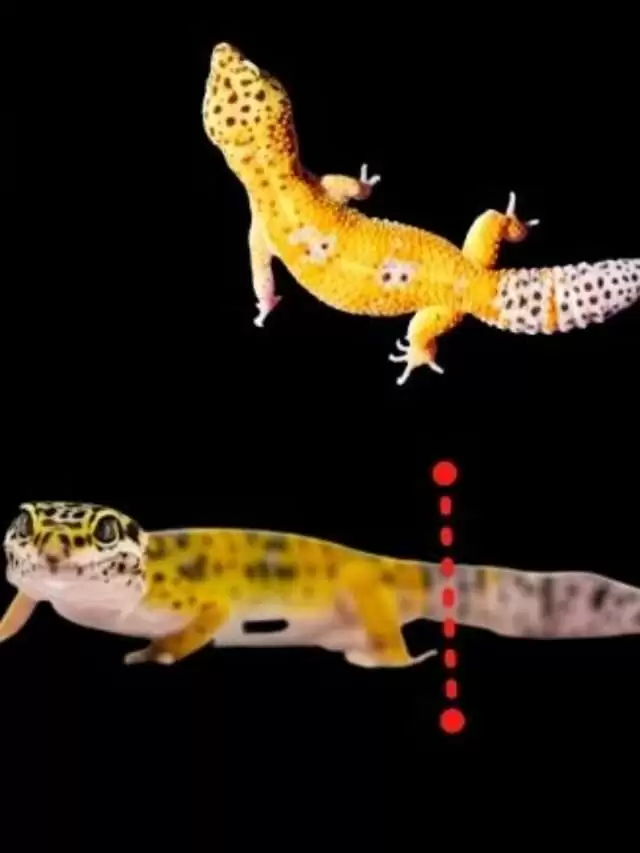
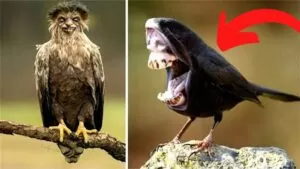
![Moon Jellyfish has [ Hidden Secrets ] You don't know moon jellyfish](https://spaceupper.com/wp-content/uploads/2022/11/1-1-300x169.jpg.webp)
